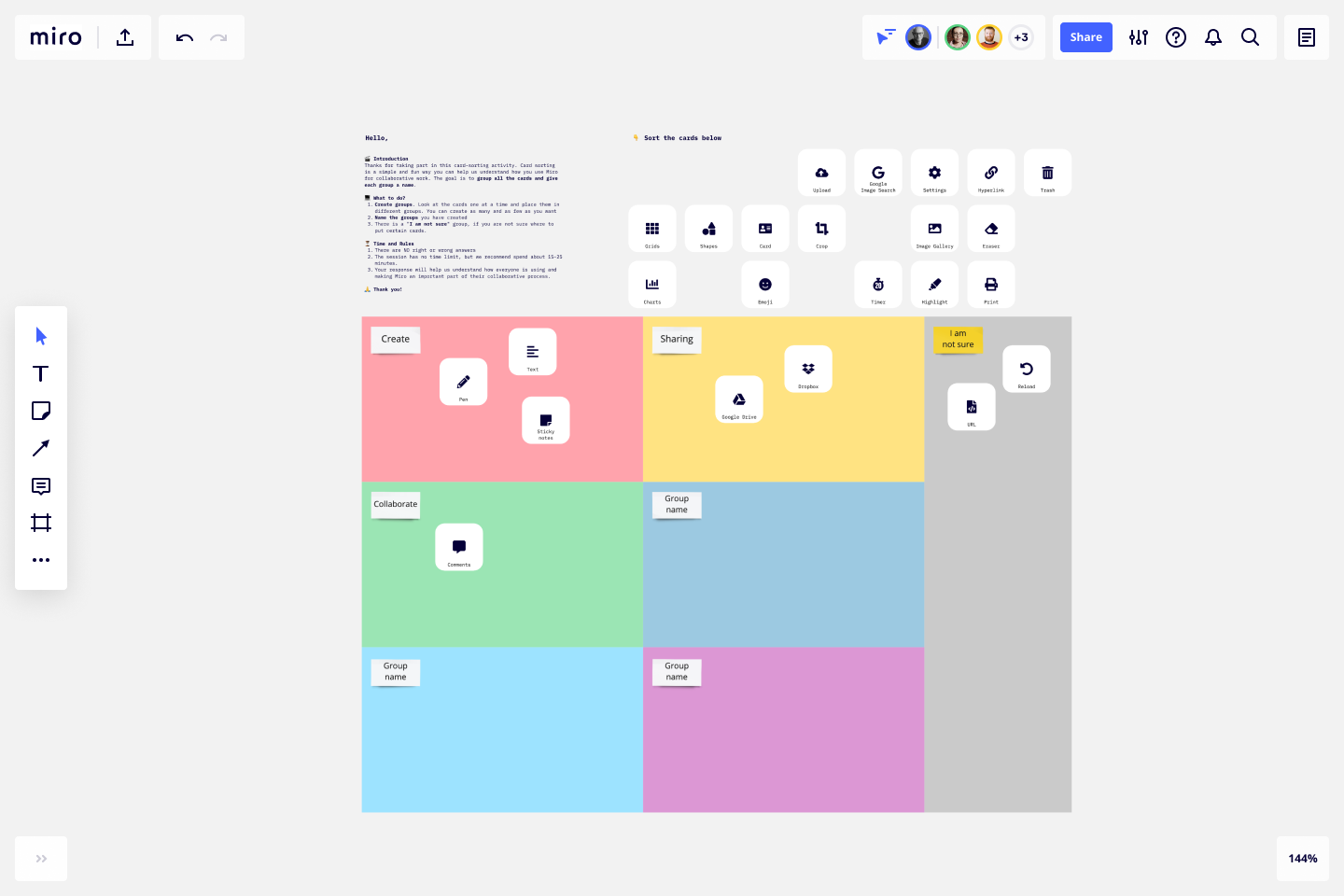I read through an article on the topic of card sorting on nngroup.com.
What is card sorting in UX?
Card sorting is a UX research method where study participants group individual labels written on notecards according to criteria that make sense to them. This method uncovers how the target audience’s domain knowledge is structured, and it serves to create an information architecture that matches users’ expectations. For example, if you’re designing a shoe site. Your site offers hundreds of shoes. A visitor might sort them into categories like “Sports Shoes” or “Dress Shoes”, or they might group them by “High Heels”, “Flats”, and “Boots”.
But your company may use more savvy shoe categories like “Alpine Ski Boots”, “Water Shoes”, or “Luxury fall collection” that a user wouldn’t understand. The purpose of card-sorting is to think about the user’s perspective and come up with an information architecture that serves their needs.

How to conduct card sorting:
- Write a number of topics on index cards that label each individual piece of content on the site
- The deck of index cards is shuffled and given to the participants. Users then start to lay cards down, organising them into piles if those cards ‘belong together’ or might be grouped in the same category.
- Users then label the groups of cards by giving them a category name. What this does is reveal a structure to the content that the users are finding on your site.
- Ask the user questions based on their sorting of the cards. Why did they place X card into X group? Was it easy to place some cards? Did some cards belong in 2 groups? If there are any unsorted cards, ask why they are unsorted. Asking the user to think aloud when conducting the sorting in the first place may also be useful in providing more meaningful insight into their sorting.
- You can then ask the user to break up their categories of cards into smaller groups. This is especially useful if the user had only a few number of groups of cards.
- Repeat this series of steps for 15-20 users. Doing so will allow greater insight and help solidify patterns of card groups.
- Analyse the data – find patterns that are emerge. You can simply count the number of times each category occurred, or you can also look at the relationships between the cards within each group or even compare the differences between the groups. These may then become the basis for creating your site’s information architecture.
There are several ways of conducting card sorting. The method described in the article seemed effective, but there are other methods involving predetermined set of category names for users to group cards into, moderated and unmoderated card sorting, paper card sorting using index cards and digital card sorting using drag and drop software.

Which one should you use? It’s hard to say. A properly-run, well-designed card sort experiment will yield reliable results, but they are slow and methodical. If I were to conduct card sorting when designing my healthcare application, I may choose the method described in the article, as it seemed to be the most straight-forward and effective method that I could use. Using card sorting will also allow me to ensure that the information architecture of the site makes sense to users, and I will consider this as research for my upcoming projects.